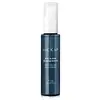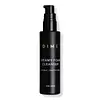What's inside
What's inside
 Key Ingredients
Key Ingredients

 Benefits
Benefits

 Concerns
Concerns

 Ingredients Side-by-side
Ingredients Side-by-side

Water
Skin ConditioningGlycerin
HumectantSodium Cocoyl Glutamate
CleansingCocamidopropyl Betaine
CleansingPEG-6 Caprylic/Capric Glycerides
EmulsifyingSodium Chloride
MaskingLactobionic Acid
BufferingSalicylic Acid
MaskingLactic Acid
BufferingNiacinamide
SmoothingAlteromonas Ferment Extract
Skin ConditioningSodium PCA
HumectantMagnesium PCA
HumectantZinc PCA
HumectantManganese PCA
HumectantAllantoin
Skin ConditioningDextrin
AbsorbentPolydextrose
HumectantAmylopectin
Sodium Cocoamphoacetate
CleansingButylene Glycol
HumectantPhenoxyethanol
PreservativeEthylhexylglycerin
Skin ConditioningPotassium Sorbate
PreservativeWater, Glycerin, Sodium Cocoyl Glutamate, Cocamidopropyl Betaine, PEG-6 Caprylic/Capric Glycerides, Sodium Chloride, Lactobionic Acid, Salicylic Acid, Lactic Acid, Niacinamide, Alteromonas Ferment Extract, Sodium PCA, Magnesium PCA, Zinc PCA, Manganese PCA, Allantoin, Dextrin, Polydextrose, Amylopectin, Sodium Cocoamphoacetate, Butylene Glycol, Phenoxyethanol, Ethylhexylglycerin, Potassium Sorbate
Water
Skin ConditioningButylene Glycol
HumectantPentylene Glycol
Skin ConditioningGlycerin
HumectantSodium Cocoyl Glutamate
CleansingCoco-Betaine
CleansingCaprylyl Glycol
EmollientCetyl Hydroxyethylcellulose
Emulsion StabilisingPCA Ethyl Cocoyl Arginate
MoisturisingPyrus Malus Fruit Extract
Skin ConditioningBeta Vulgaris Root Extract
Skin ConditioningFructooligosaccharides
HumectantGlycolic Acid
BufferingCaprylhydroxamic Acid
Piroctone Olamine
PreservativeTetrasodium Glutamate Diacetate
Bakuchiol
AntimicrobialSodium PCA
HumectantAloe Barbadensis Leaf Juice
Skin ConditioningArtemisia Vulgaris Extract
Skin ConditioningDipotassium Glycyrrhizate
HumectantLaminaria Digitata Extract
Skin ProtectingZinc PCA
HumectantCinnamomum Cassia Bark Extract
MaskingSanguisorba Officinalis Root Extract
CleansingZingiber Officinale Root Extract
MaskingWater, Butylene Glycol, Pentylene Glycol, Glycerin, Sodium Cocoyl Glutamate, Coco-Betaine, Caprylyl Glycol, Cetyl Hydroxyethylcellulose, PCA Ethyl Cocoyl Arginate, Pyrus Malus Fruit Extract, Beta Vulgaris Root Extract, Fructooligosaccharides, Glycolic Acid, Caprylhydroxamic Acid, Piroctone Olamine, Tetrasodium Glutamate Diacetate, Bakuchiol, Sodium PCA, Aloe Barbadensis Leaf Juice, Artemisia Vulgaris Extract, Dipotassium Glycyrrhizate, Laminaria Digitata Extract, Zinc PCA, Cinnamomum Cassia Bark Extract, Sanguisorba Officinalis Root Extract, Zingiber Officinale Root Extract
 Reviews
Reviews

Ingredients Explained
These ingredients are found in both products.
Ingredients higher up in an ingredient list are typically present in a larger amount.
Butylene Glycol (or BG) is used within cosmetic products for a few different reasons:
Overall, Butylene Glycol is a safe and well-rounded ingredient that works well with other ingredients.
Though this ingredient works well with most skin types, some people with sensitive skin may experience a reaction such as allergic rashes, closed comedones, or itchiness.
Learn more about Butylene GlycolGlycerin is already naturally found in your skin. It helps moisturize and protect your skin.
A study from 2016 found glycerin to be more effective as a humectant than AHAs and hyaluronic acid.
As a humectant, it helps the skin stay hydrated by pulling moisture to your skin. The low molecular weight of glycerin allows it to pull moisture into the deeper layers of your skin.
Hydrated skin improves your skin barrier; Your skin barrier helps protect against irritants and bacteria.
Glycerin has also been found to have antimicrobial and antiviral properties. Due to these properties, glycerin is often used in wound and burn treatments.
In cosmetics, glycerin is usually derived from plants such as soybean or palm. However, it can also be sourced from animals, such as tallow or animal fat.
This ingredient is organic, colorless, odorless, and non-toxic.
Glycerin is the name for this ingredient in American English. British English uses Glycerol/Glycerine.
Learn more about GlycerinSodium Cocoyl Glutamate is a gentle cleanser and surfactant. It is the sodium salt of the Cocoyl Glutamic Acid and comes from coconut oil. As a surfactant, it helps lift dirt and oil to be washed away.
Sodium Cocoyl Glutamate also has an emolliating effect and can help leave the skin feeling soft.
Sodium PCA is the sodium salt of pyroglutamic acid. It is naturally occurring in our skin's natural moisturizing factors where it works to maintain hydration.
The PCA stands for pyrrolidone carboxylic acid, a natural amino acid derivative.
This ingredient has skin conditioning, anti-inflammatory, and humectant properties. Humectants help hydrate your skin by drawing moisture from the air. This helps keep your skin moisturized.
Learn more about Sodium PCAWater. It's the most common cosmetic ingredient of all. You'll usually see it at the top of ingredient lists, meaning that it makes up the largest part of the product.
So why is it so popular? Water most often acts as a solvent - this means that it helps dissolve other ingredients into the formulation.
You'll also recognize water as that liquid we all need to stay alive. If you see this, drink a glass of water. Stay hydrated!
Learn more about WaterZinc PCA (or "zinc salt") differs slightly from zinc itself. PCA stands for pyrrolidone carboxylic acid. However, Zinc PCA comes from zinc.
It can help reduce redness, regulate sebum, and promote the general healing process of the skin.
Zinc PCA tends to be especially useful for those with oily, acne-prone skin. It's certainly an ingredient worth trying out!
Learn more about Zinc PCA